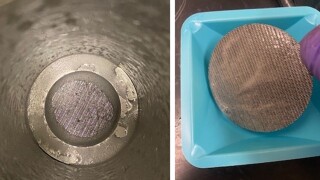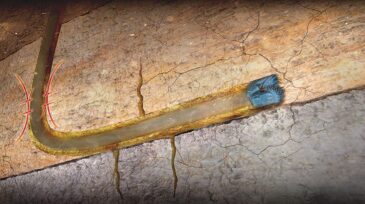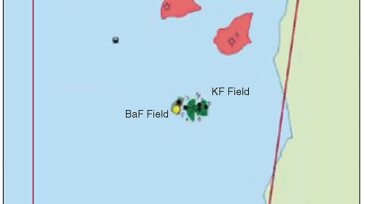Drilling/completion fluids
One major challenge for drilling-fluid engineers is the design and management of optimal drilling-fluid formulations in emerging frontiers—fractured formations and high-pressure geothermal environments. Recently, operators have leveraged cutting-edge technology such as machine learning and expanded data-driven techniques to facilitate the development of new drilling-f…
This research aims to develop a fluid-advisory system that provides recommendations for optimal amounts of chemical additives needed to maintain desired fluid properties in various drilling-fluid systems.
This paper describes development of a high-temperature water-based reservoir drill-in fluid using a novel synthetic polymer and customized with optimal chemical concentrations and sized calcium carbonate.
-
In an effort to optimize drilling operations and economics, an operator examined the effect of adding hollow glass spheres (HGSs) directly to the drilling fluid instead of performing underbalanced drilling.
-
The strength and conductivity of proppant packs are key parameters for assessing their performance. This paper introduces a new analysis technique based on interpretation of acoustic measurements to quantify mechanical damage in propping agents.
-
This paper presents experimental research in which a significant fracture-pressure increase was achieved in shale and the predominant wellbore strenghtening mechanism was identified.
-
Technology developers are working on a new ultrasonic flowmeter for drilling fluids aimed at obtaining better measurements than current systems with far fewer disruptions to rig systems.
-
Making hole has become a more difficult and complex operation as operators move into untapped horizons, especially deepwater and unconventional fields.
-
This paper discusses the laboratory evaluation of potential high-pressure/high-temperature (HP/HT) drilling-fluid designs considered for a deep gas exploration well in Malaysia.
-
Mutual understanding and respect when universities collaborate with industry is crucial. A clear policy on harmonizing innovation and higher education should be created. However, caution must be taken not to have a one-size-fits-all approach.
-
This paper describes the first application of clay-free IEFs in the Norwegian continental shelf (NCS), with an emphasis on an impressively low and consistent ECD contribution.
-
This paper describes the evaluation of a nanofluid containing nanomaterials with high adsorption capacity used for asphaltene inhibition in the volatile Cupiagua Sur oil field in Colombia.
-
Historically, invert-emulsion drilling fluids are the preferred system for drilling offshore Cameroon. However, with a regulatory environment moving toward zero discharge, associated costs are rising.













